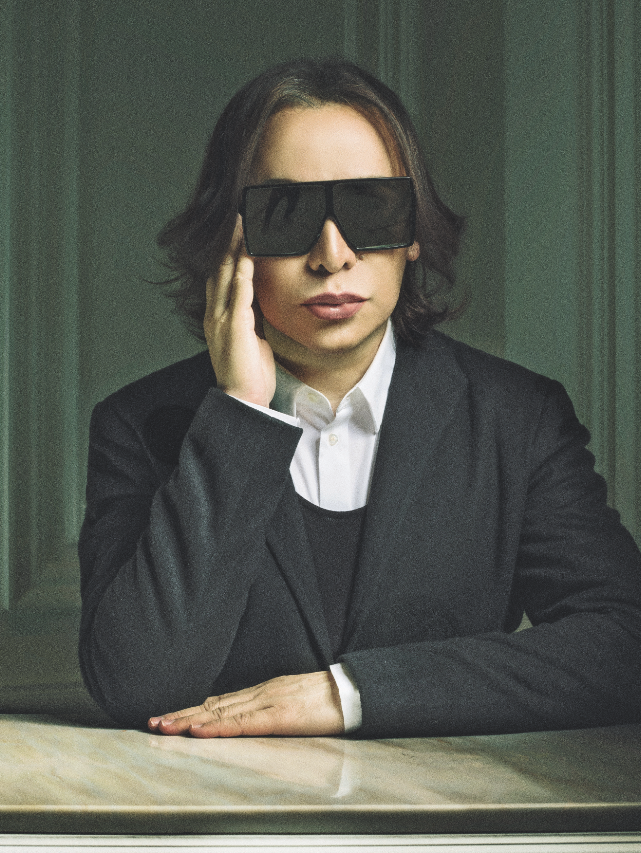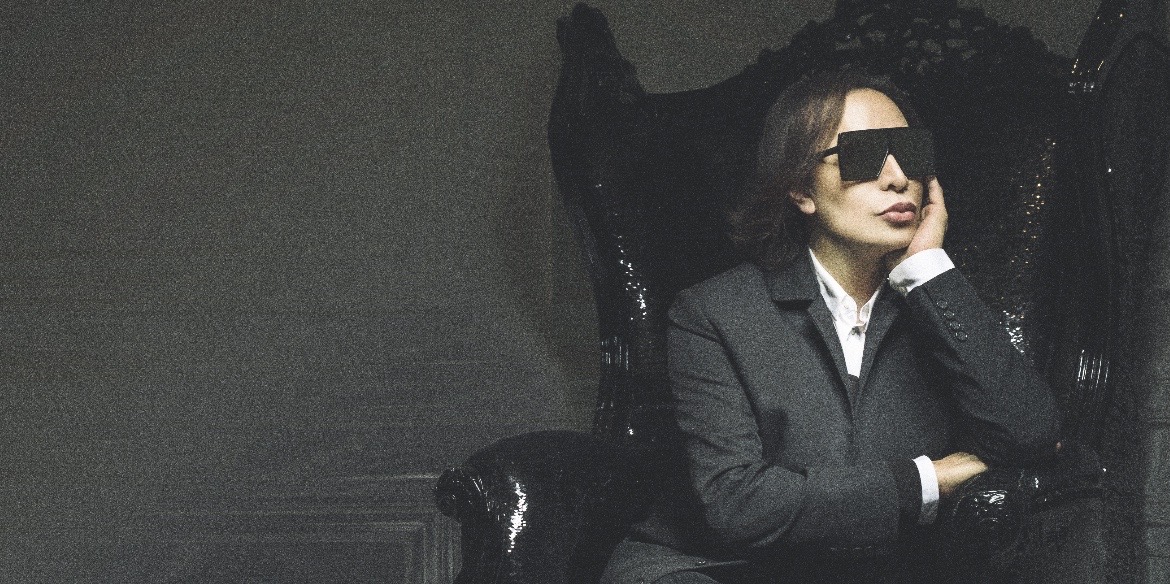 The boy from Samar, who was initially drawn to fashion design after seeing Audrey Hepburn in a beautiful white dress in My Fair Lady, has come a long way to become owner and CEO of his own brand in Dubai. He has reached the top, but not after experiencing his fair share of rejections, racism and putdowns along the way.
The boy from Samar, who was initially drawn to fashion design after seeing Audrey Hepburn in a beautiful white dress in My Fair Lady, has come a long way to become owner and CEO of his own brand in Dubai. He has reached the top, but not after experiencing his fair share of rejections, racism and putdowns along the way.
By ALEX Y. VERGARA
If there’s one thing world-renowned Filipino designer Michael Cinco has proven after being in the fashion business for nearly 30 years now, it’s that success, no matter how good you think you are, will never be handed to you on a silver platter. It’s not for the faint of heart, either. With it comes countless rejections, incidents of racism and putdowns that could make even the most talented and confident designer seethe in anger or cry in a corner.
But unlike most people who dwell on the good and gloss over, or even deliberately forget the bad, the Dubai-based Michael, a native of Catbalogan, Samar and, once upon a time, a graduate of Slim’s Fashion and Arts School, uses both positive and negative experiences that come his way to fuel his creativity.
Who’s laughing now?
In 2008, for instance, Michael, who was already fairly known in certain parts of the Middle East, was at a formal dinner in Manila. Among his fellow guests was an established Filipino designer based in the Philippines. When he learned that Michael was a Dubai-based designer, the fellow let out a huge laugh.
His condescending ways continued when he told Michael that he considers most Filipino designers in the Middle East as OFWs (overseas Filipino workers) with “baduy (tacky) taste.” He then told other guests at the dinner table the he, too, was once offered to work in Dubai, but he declined “because it would lower my image and market value.”
Michael, whose name then had yet to ring a bell among Manila’s fashion cognoscenti, took it all in. But the embarrassment he went through challenged him to prove the designer and anyone who looked down on him and his fellow Middle East-based colleagues wrong.
And that occasion came not long after when Michael was invited to do a show at one of those biannual fashion weeks. The event’s fashion director emailed Michael in Dubai if he was interested.
“I was initially hesitant because I wasn’t sure of getting a good reception in Manila,” he says. “Would I be able to convince them that not all OFW designers are baduy? In the end, I took the plunge and decided to create a 10-piece collection. When I was working on it, I was saying to myself: ‘Ah, baduy pala ha. Sige, sisilawin kita ngayon ng Swarovski crystals!” (So, you think my work is tacky. Well, I’m now going to blind you with Swarovski crystals!)
His segment was so well-received that the show’s director and producer asked him to do a bigger solo show next time. And he did, earning for Michael more media mileage and eager clients. It wasn’t long before Ben Chan caught one of Michael’s shows abroad. So impressed was Ben that he went backstage to talk to Michael and ask him to collaborate with his team on one of Bench’s forthcoming underwear shows.
“I told him, I can’t do it alone because I knew that such shows were big,” he says. “So, I suggested to Ben that he also sign up other Dubai-based designers like Furne One, Ezra Santos and Val Taguba.”
Dubai “beauties”
Together with Cebu-based designer Cary Santiago, who earned his spurs working in Lebanon, the “Dubai beauties,” as Michael and his Middle East-based colleagues are often collectively called, soon became household names even if most Filipino women couldn’t afford to buy their couture ball gowns, much less their ready-to-wear dresses.
Apart from producing an underwear line, Michael’s collaboration with Bench also saw the birth of his own perfume and body spray line dubbed as “Impalpable.”
If you look through his social media accounts, you’d see long-haired Michael, his eyes perennially covered in designer shades, either giving the smartphone camera his signature pout or hobnobbing with and attending to the Red Carpet and wedding requirements of Middle East and European royalty, heiresses, global beauty queens, pop divas and A-list denizens from both Hollywood and Bollywood.
He also loves to post pictures of his travels, whether in India, the Balkans, France, Norway, Finland, or Iceland. He says he loves to travel in spring and winter, and confesses to have a weakness for “winter countries.” As we interview him via Facebook Messenger, Michael is taking in the sights at the Alhambra fortress in Andalusia, Spain.
“I’ve never been so inspired and excited in my life,” says Michael, who reveals that a huge part of what inspires and fuels his creativity are his travels and the images he sees in old Hollywood films.
Dressing up Audrey
Never mind that they’re both long dead, but Michael’s ultimate dream if he could just go back in time is to dress up Audrey Hepburn and Maria Callas, the “epitome,” he says, “of women with class and sophistication.”
Michael was just 10 when he got to watch My Fair Lady for the first time. He didn’t understand a thing about the movie, but when he saw Audrey descending down the steps wearing an achingly lovely white creation to the embassy ball, “I knew from that moment on that I wanted to be a designer.”
Growing up in an obscure corner of Catbalogan, Michael, the fifth of eight children, didn’t get enough exposure from the usual sources like fashion magazines, TV and the movies. But he drew on his province’s lush surroundings, which “allowed my imagination to run wild.”
“I always chased after rainbows as a young kid growing up in Samar,” he shares. “My very first attempt at fashion was when I designed my younger sister’s prom dress. Since I still had no clue how to cut and sew, I went to a dressmaker and, based on my design, asked her to make my sister’s dress.”
Although both his parents were supportive, Michael’s dad initially wanted his son to become a painter. With three of his older siblings already attending school in Manila, Michael had to postpone taking up college. But he eventually earned a scholarship, which allowed him to take up Fine Arts.
But even with the free tuition their son got, Michael’s parents still struggled to support him through school. He eventually had to quit Fine Arts until an aunt in Manila financed his vocational studies at Slim’s.
The fashion school proved very supportive, as it helped Michael get short-term fashion-related jobs through the school’s extensive contacts. The money he earned as a working student tided him over until he was able to graduate and find a job as a newbie designer in a Makati boutique.
Unhappy in Riyadh
“After working in Makati for two years, I was offered, again through Slim’s connections, a job to work in Riyadh,” says Michael. “That was in 1993. It was a big culture shock for me in terms of both the Saudi lifestyle and Middle Eastern taste.”
But his ability to draw something good from a seemingly less ideal situation again kicked in. And, thanks to all those period films and musicals Michael watched again and again in Manila, his eyes had become used to the intricate details and wonderful possibilities of costume design.
“Adapting to the Arab aesthetics was easy,” he adds. “What I didn’t like was living in Riyadh. After two years, I went back home to Manila and for two years worked with Renee Salud.”
By 1997, Michael again received an offer to work abroad from one of the supposedly more established fashion houses in the Middle East. This time, it was in a new, relatively open and booming city called Dubai. He grabbed the opportunity and never looked back.
Fast forward to 2019, as Michael goes about regaling us with bits and pieces of stories, including the time when Jennifer Lopez’s stylist, a woman, showed Michael a message from JLo herself telling the stylist how much she adores the designer’s clothes.
“Dressing up Beyoncé is a dream,” adds Michael, who singles out Christian Dior, Valentino Garavani, Hubert Givenchy, Inno Sotto and Renee Salud as designers “who fascinate me.”
He continues: “I met Mariah Carey and had a personal private fitting with her. Apart from her sultry bedroom voice, I think she’s the kindest celebrity I’ve ever met. Aishawarya Rai personally told me how she loves wearing my clothes because she feels like a princess in them.”
Fake British accent
Indeed, Michael is now living his dream. As a former creative director of a struggling Dubai-based fashion house, a newly hired Michael used to make cold calls with a fake British accent on potential Arab clients, who tended to look down on non-European designers, just to convince them to come over. Well, not anymore.
Together with an Egyptian business partner, Michael is now the CEO and owner of the company who controls the Michael Cinco brand. Yes, the name has now become a brand, which has five creative people onboard and employs a team of 150 skilled artisans from India, Pakistan, various parts of Africa and, of course, the Philippines.
Back in 1997, the fashion house which hired him, although considered one of the biggest in the city, was mismanaged and on the brink of bankruptcy. It was up to Michael to revive the house’s fortune.
“It was hard notwithstanding that there were already other Filipino designers in Dubai back then,” he says. “Discrimination among rich Arab clients run deep. They only look up to fellow Arab and Europeans designers. I experienced rejection after rejection.”
For two months, no one came. But Michael, fake British accent and all, never lost hope. He plodded on, introducing new looks and silhouettes to lure clients in. It eventually worked, as they were able to look past Michael’s nationality and instead see the merits of his clothes.
“The biggest advantage of working in the Middle East is access to the best luxury fabrics and crystals,” he shares. “It’s also a privilege to have a great team of Indian embroiderers and highly skilled artisans. The biggest disadvantage, of course, is being away from family and the possibility of experiencing culture shock, rejections and outright racism.”
Coming home
Admittedly, part of what drives him to showcase his collection in Manila is validation. Michael, who staged his biggest show to date last September in celebration of Ballet Philippines’ 50th anniversary at the Cultural Center of the Philippines, admits that it’s more challenging but also more rewarding to do a fashion show here.
“I want to show fellow Filipinos and instill pride in them that we have designers abroad who could make clothes that are on par with what Westerners do. I also want to share my little achievements with my country and my people,” he concludes.
Like Michael Cinco, anyone could dare to dream and be able to realize them no matter how impossible and impalpable they may seem if only they would believe in themselves.





